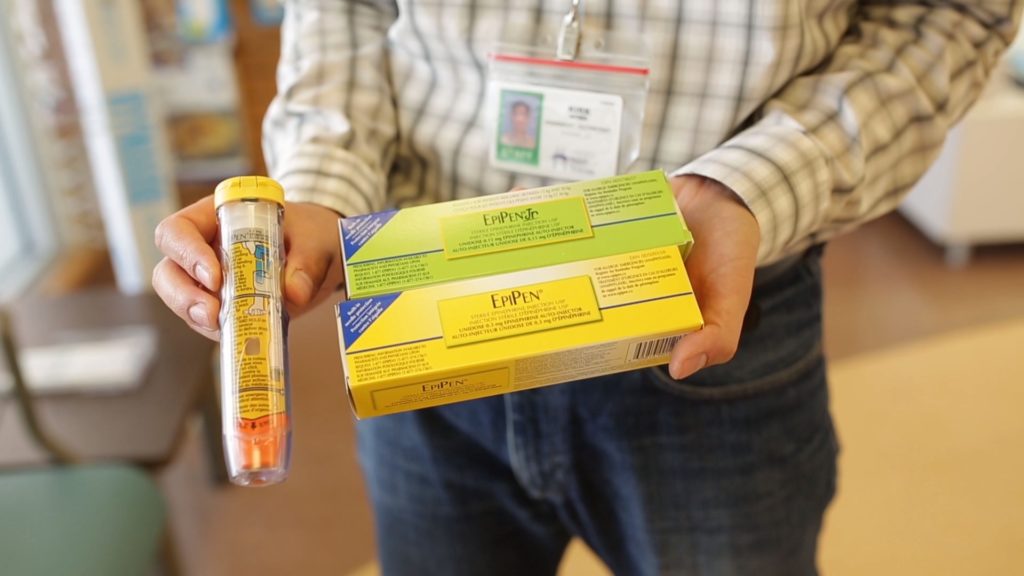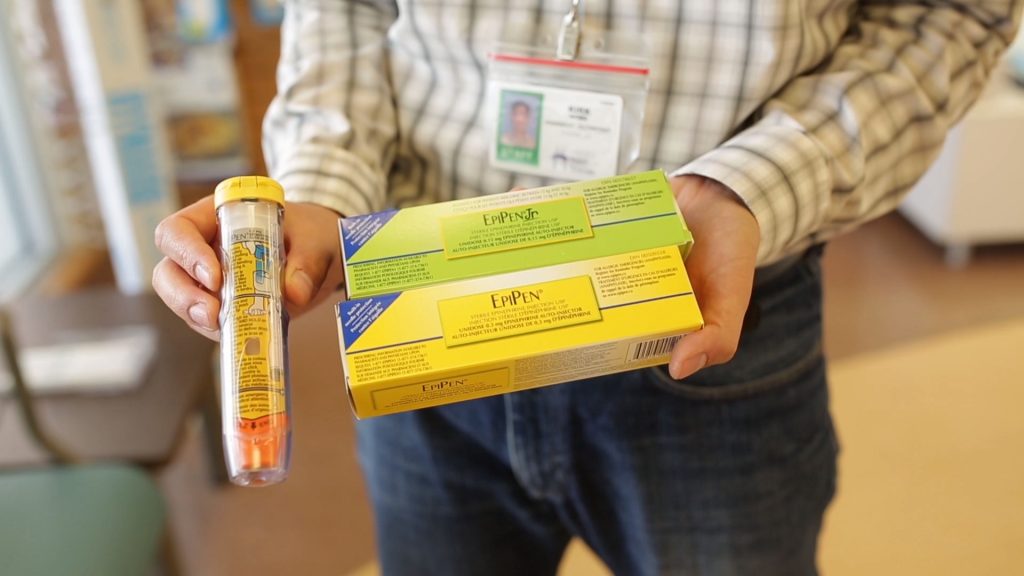
How to use an EpiPen
What is an EpiPen?
An EpiPen is an auto-injector device carried by someone at risk of having a severe allergic reaction, also called anaphylaxis, to various allergens like food, insects, medication, latex and other causes. Once administered, it automatically injects epinephrine to decrease the body’s allergic reaction. The drug works to relax the airways to help a person breathe easier, and works to reverse the dangerous decrease in blood pressure that can happen during an allergic reaction.
EpiPens are easy to use and can save a life. Four per cent of Canadians are estimated to have a food allergy. Once someone has had a severe reaction, they are at a higher risk of experiencing another. The risk is also higher for those with asthma. That’s why it’s important for those with allergies (and their caregivers) to always carry an EpiPen, in addition to having them stored in the places they frequent most: at home, work, cottage, school, camp, daycare, etc.
VIDEO: How an Epipen works
There are just two steps to using an EpiPen. Learn how to use one properly with Kirk Wong, a pharmacist at Hamilton General Hospital’s Hamilton General Drugstore.
To use an EpiPen on yourself…
- Hold the pen in a fist with the blue end facing up to the sky.
- Pull of the blue cap.
- If the window on the side of the pen is clear, it’s ready to use.
- Swing your hand back and push the pen into your thigh.
- When you hear a click, hold the pen for five seconds.
On someone else…
- Have them sit down and kneel beside them.
- Complete steps 1-5 from the above list, pushing the pen into their thigh.
Once the EpiPen is injected into the thigh and you hear the click sound, hold it in for several seconds. An EpiPen can be used through clothing, even jeans. Once it is pulled out, the orange cover automatically extends to ensure the needle is not exposed. After using an EpiPen, always call 9-1-1 or go directly to your closest emergency department.

When should you use it?
Use an EpiPen at the first sign of a severe allergic reaction. Don’t hesitate. Reactions can happen within minutes or hours after exposure. It’s important to know the symptoms to look out for like swelling of the throat, difficulty breathing, skin redness, and fainting – every second counts.
Do you have to go to the hospital after?
Yes, using an EpiPen does not replace going to the hospital. You could have a second reaction or the effects of the medication could wear off. You’ll need to find out if additional medication is required.
Make sure you have another EpiPen with you when you leave the hospital. You’ll want to stay close by for the next 48 hours in case of another emergency.
Children and EpiPens
Those prescribed an EpiPen should carry it with them at all times. If your child has one, ensure their teacher and school have extras and are aware of how to use it. If kids are old enough, they can carry a convenient waste pack so it’s always on their body in case of an emergency.
Remember, EpiPens do expire so know the date and set a reminder when it’s time to get a new one (the expiry date refers to the end of the month).
Storing your EpiPen
Keep your EpiPen at room temperature, not in the fridge, and away from light. EpiPens can only be exposed to temperatures between 15 and 30 degrees. Remember not to leave your EpiPen in the car during hot or cold weather.
To be sure your EpiPen has been stored safety, check the solution in the viewing window and replace it if it’s discoloured or cloudy.
